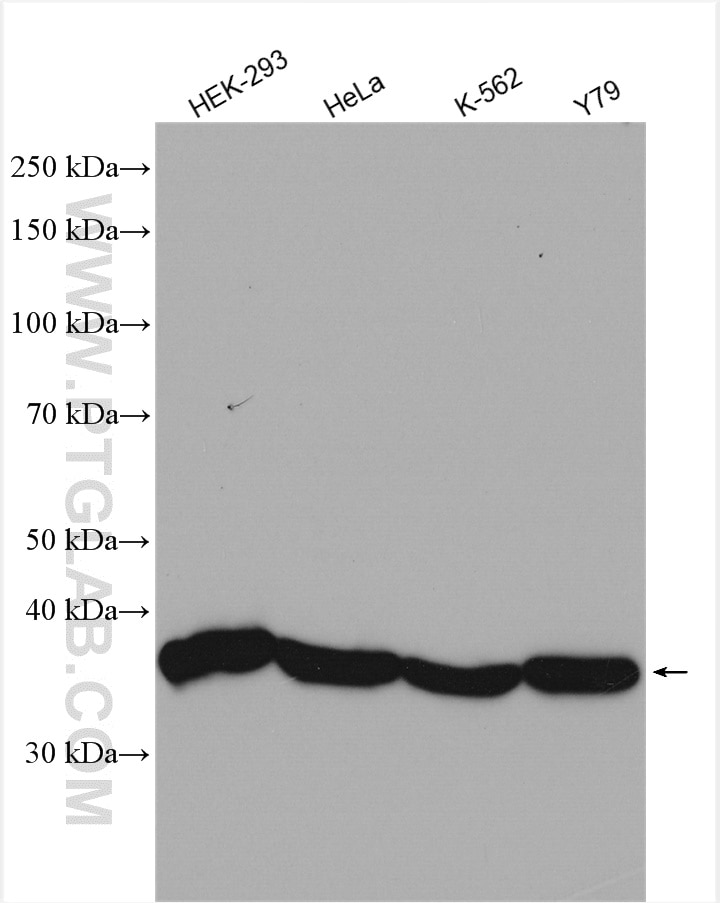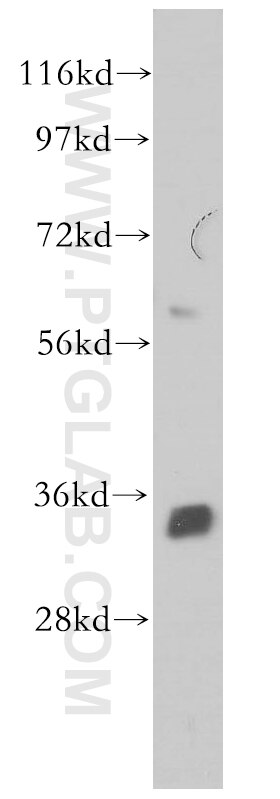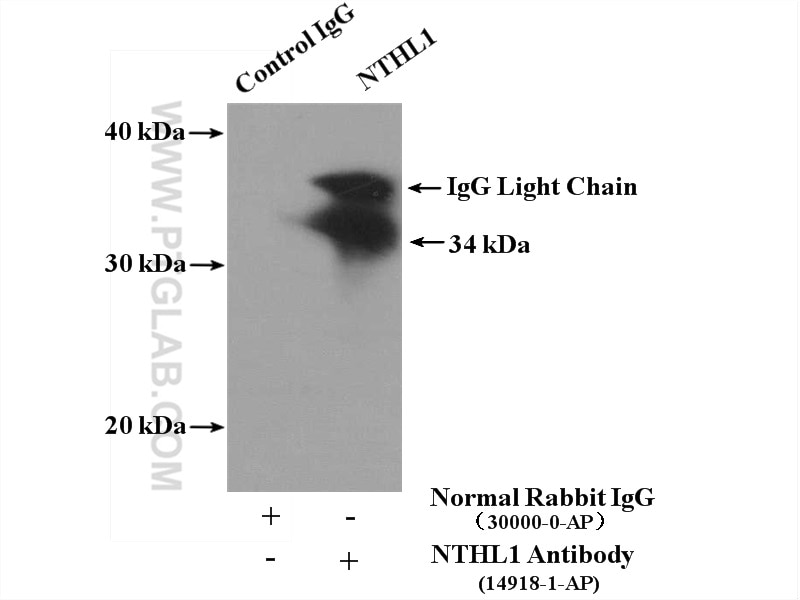Anticorps Polyclonal de lapin anti-NTHL1
NTHL1 Polyclonal Antibody for WB, IP, ELISA
Hôte / Isotype
Lapin / IgG
Réactivité testée
Humain, rat, souris
Applications
WB, IP, ELISA
Conjugaison
Non conjugué
N° de cat : 14918-1-AP
Synonymes
Galerie de données de validation
Applications testées
| Résultats positifs en WB | cellules HEK-293, cellules HeLa, cellules K-562, cellules Y79 |
| Résultats positifs en IP | cellules Y79 |
Dilution recommandée
| Application | Dilution |
|---|---|
| Western Blot (WB) | WB : 1:500-1:2000 |
| Immunoprécipitation (IP) | IP : 0.5-4.0 ug for 1.0-3.0 mg of total protein lysate |
| It is recommended that this reagent should be titrated in each testing system to obtain optimal results. | |
| Sample-dependent, check data in validation data gallery | |
Applications publiées
| WB | See 2 publications below |
Informations sur le produit
14918-1-AP cible NTHL1 dans les applications de WB, IP, ELISA et montre une réactivité avec des échantillons Humain, rat, souris
| Réactivité | Humain, rat, souris |
| Réactivité citée | Humain |
| Hôte / Isotype | Lapin / IgG |
| Clonalité | Polyclonal |
| Type | Anticorps |
| Immunogène | NTHL1 Protéine recombinante Ag6734 |
| Nom complet | nth endonuclease III-like 1 (E. coli) |
| Masse moléculaire calculée | 34 kDa |
| Poids moléculaire observé | 34 kDa |
| Numéro d’acquisition GenBank | BC000391 |
| Symbole du gène | NTHL1 |
| Identification du gène (NCBI) | 4913 |
| Conjugaison | Non conjugué |
| Forme | Liquide |
| Méthode de purification | Purification par affinité contre l'antigène |
| Tampon de stockage | PBS with 0.02% sodium azide and 50% glycerol |
| Conditions de stockage | Stocker à -20°C. Stable pendant un an après l'expédition. L'aliquotage n'est pas nécessaire pour le stockage à -20oC Les 20ul contiennent 0,1% de BSA. |
Informations générales
NTHL1, also named as Endonuclease III-like protein 1 or OCTS3, is a 312 amino acid protein, which belongs to the Nth/MutY family. NTHL1 localizes in the nucleus and is widely expressed with highest levels in heart and lowest levels in lung and liver. NTHL1 Has both an apurinic and/or apyrimidinic endonuclease activity and a DNA N-glycosylase activity and incises damaged DNA at cytosines, thymines and guanines. NTHL1 acts on a damaged strand, 5' from the damaged site and is required for the repair of both oxidative DNA damage and spontaneous mutagenic lesions.
Protocole
| Product Specific Protocols | |
|---|---|
| WB protocol for NTHL1 antibody 14918-1-AP | Download protocol |
| IP protocol for NTHL1 antibody 14918-1-AP | Download protocol |
| Standard Protocols | |
|---|---|
| Click here to view our Standard Protocols |
Publications
| Species | Application | Title |
|---|---|---|
Nat Commun Mitochondrial respiratory function is preserved under cysteine starvation via glutathione catabolism in NSCLC |




